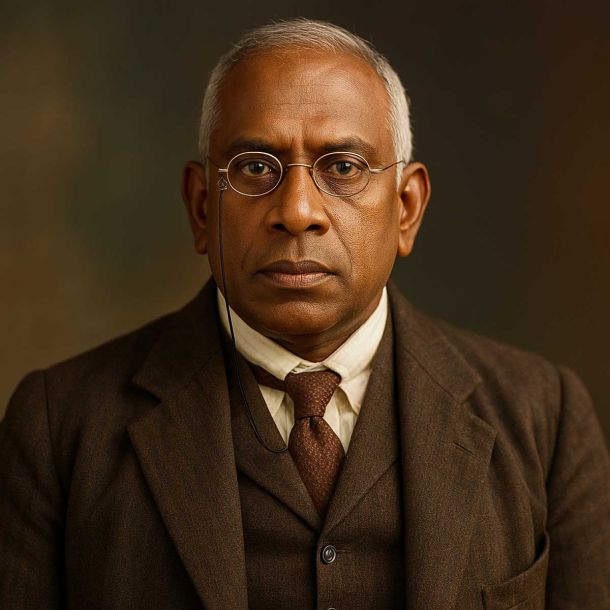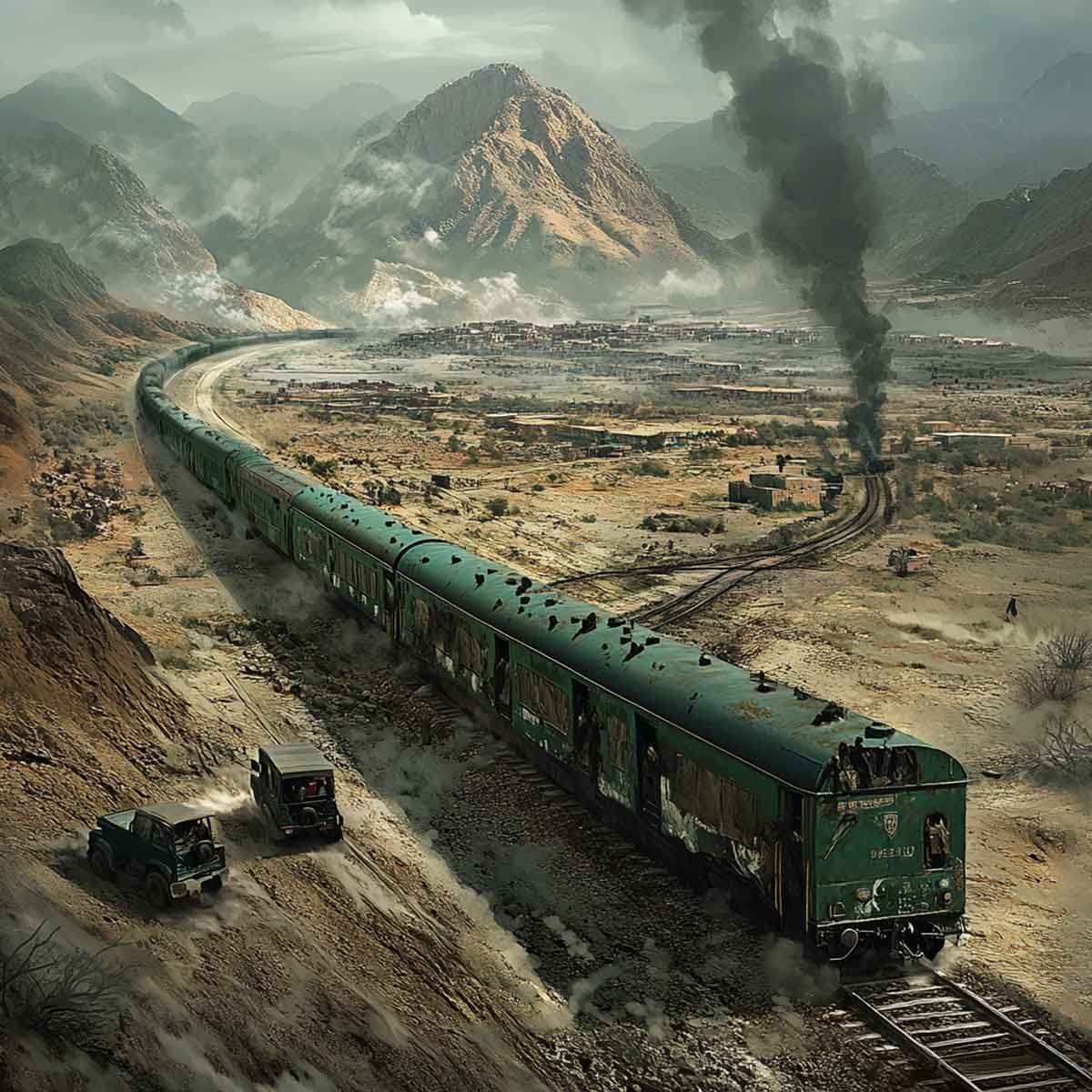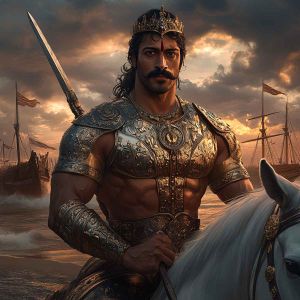Sanatan Articles
Satyaagrah
Written on
Satyaagrah
Written on
Satyaagrah
Written on
Satyaagrah
Written on
Satyaagrah
Written on
JOIN SATYAAGRAH SOCIAL MEDIA
King Uthram Thirunal Marthanda Varma of Travancore presented Ivory Throne and a stool as a gift objects to Queen Victoria, become an integral part of Queen's interiors
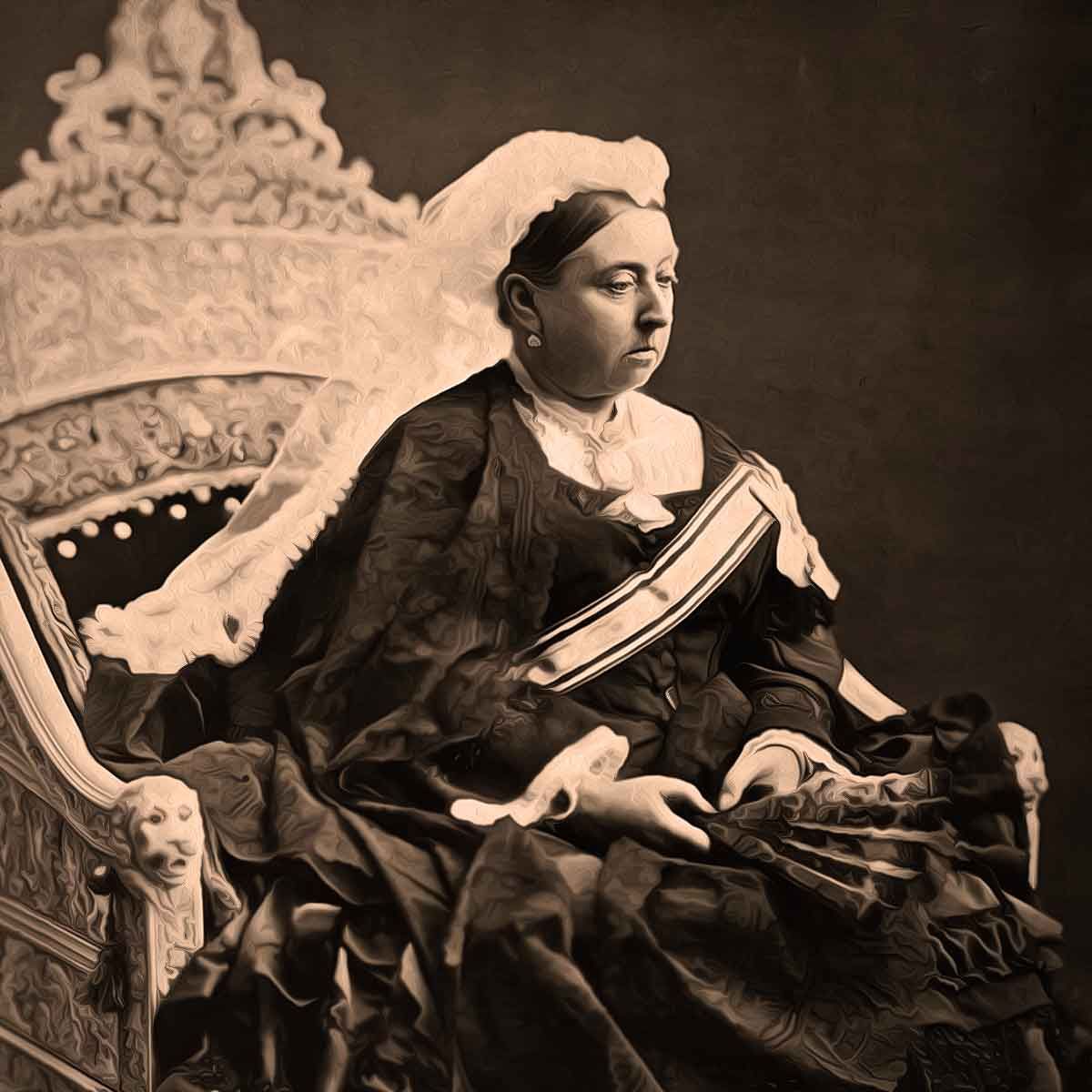
In 2014, a huge brouhaha followed a surprise announcement by Prince William of the UK: he suggested that as a symbolic warning to ivory poachers in Africa and elsewhere, all historic ivory objects in the Royal Collections Trust should be burned and destroyed. While wildlife conservationists applauded this decision, museum professionals were aghast, saying that such a move would take historical objects and make them into “artworks of shame.”
In the following years, there have been calls to consider “reason, not passion,” when thinking of solutions for ivory poaching.
Mired in this tussle was one of the most prominent objects in the royal collection—the ivory throne of Queen Victoria. Newspapers after newspapers produced the resplendent watercolor image of the throne in full royal display at The Great Exhibition of 1851 when it was exhibited. The throne was a gift object presented to Queen Victoria by king Uthram Thirunal Marthanda Varma of Travancore, part of the modern state of Kerala, India.
Completely worked by ivory carvers from the region and explicitly made as an object of mediation and diplomacy, the throne in its function and structure is not British at all.
It did, however, become an integral part of Queen Victoria’s interiors. Prince Albert, Royal Consort and beloved husband of the queen, used the throne as his presiding seat at the closing ceremony of The Great Exhibition, a program which he had patronized and helped bring to fruition. Perhaps it was this association with Prince Albert, but his widow chose this throne as her chair of state in 1876 when she was crowned The Empress of India. (You can read more about this throne in this post.)
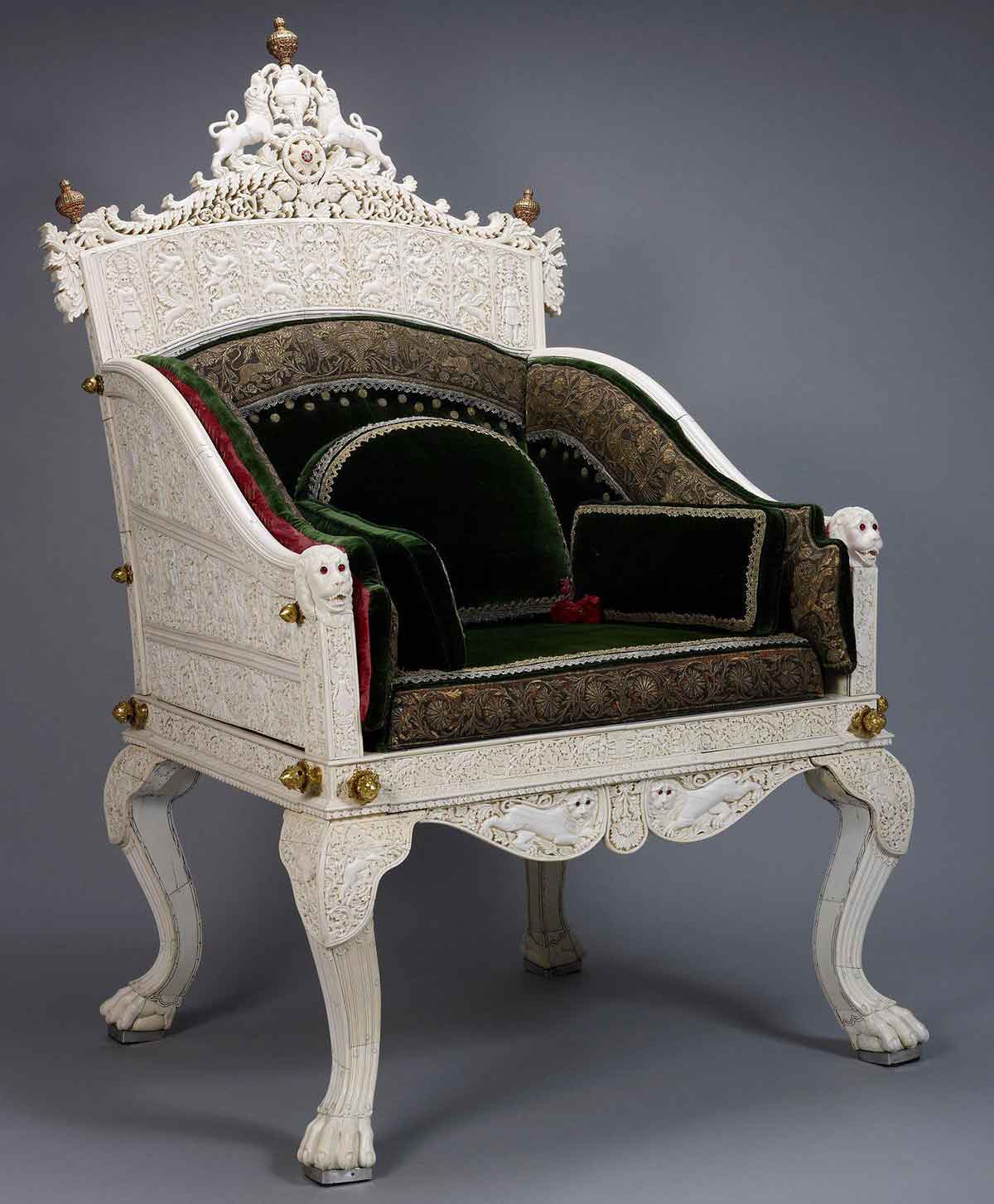 Ivory Throne and footstool 1840-50 - The Royal Collection Trust |
Today the ivory throne is carted off and hidden from the Garter Throne Room in Windsor Castle when there are official dinners and other events so as to not politicize its presence and what it means to have such objects in the royal collection.
The call for its destruction and its erasure from the public eye during important events comes from the understanding that the throne is simply made of ivory and this material quality defines the object.
In the course of studying this throne, I have come across documents that not only provide a colorful trail of stories of how the throne came to England but also a distinct understanding that the throne is not completely made of ivory as most people think it is.
Its structure is of a particular type of wood (if you want to know what wood it is and where it came from, you will have to read my dissertation, available to the public in a few months, I promise!).
A good part of what has been considered the material of ivory is not ivory from the tusk of the elephant but actually its teeth! In addition, the chance that the teeth came out of a domesticated elephant that naturally sheds its teeth six times in its life is higher than the alternative, that the teeth came from an elephant captured and killed for ivory.
For in Kerala, elephants are semi-venerated mammals, a very omnipresent animal important to temple activities across the state even today.
While we can question the inhumaneness of taming an untameable wild animal, in Kerala, historically elephants were never actively killed for the game. (This has since changed and poaching has been a serious issue in the last few decades.)
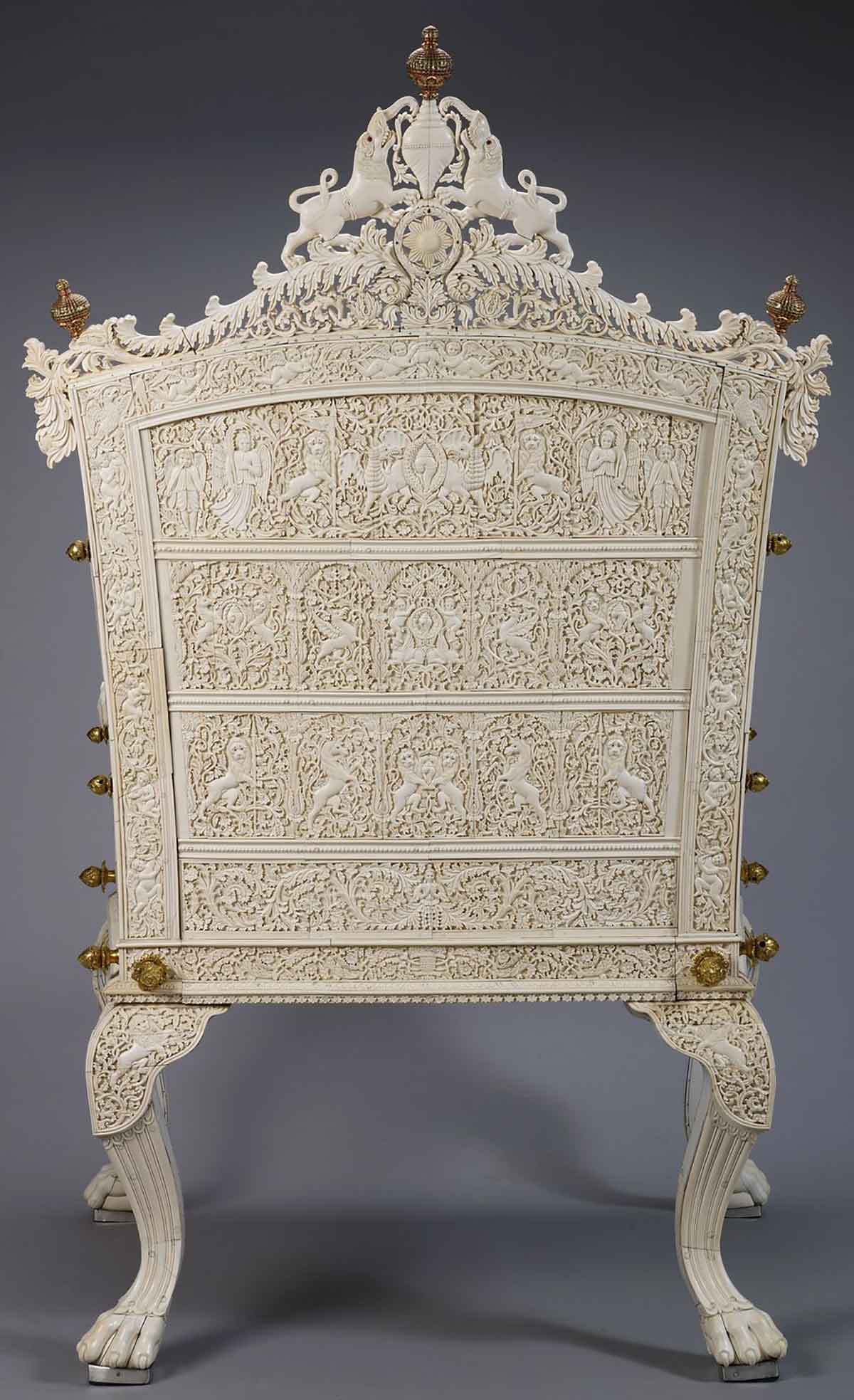 Ivory Throne and footstool 1840-50 - The Royal Collection Trust |
For our purposes here, the brouhaha about the throne and its threatened destruction is borne out of a lack of knowledge about its materials and how it was produced.
There is also the sense that the throne is representative of only the British monarchy when clearly it is as much an object of Kerala as it is of Queen Victoria. Its material, design, patronage, and circulation originated from Travancore.
It remains one of the premier artistic objects made in the nineteenth century in Travancore. Its destruction would be a significant blow to an already understudied region whose artistic heritage is limited due to the prolific use of organic materials that are easily lost to time.
In the case of Queen Victoria’s ivory throne, the production of historical knowledge is an ideal way to distance the throne from the discussion of ivory. The object is more than its material. For me, the creation of knowledge is activism and part of the project to preserve precarious objects like the ivory throne.
There are many other ways in which objects are in danger of being destroyed physically or erased from history. In the ethnonationalist world that we live in today, the presence of heritage objects becomes all the more necessary as visual reminders of the plural and interconnected cultures that came before us.
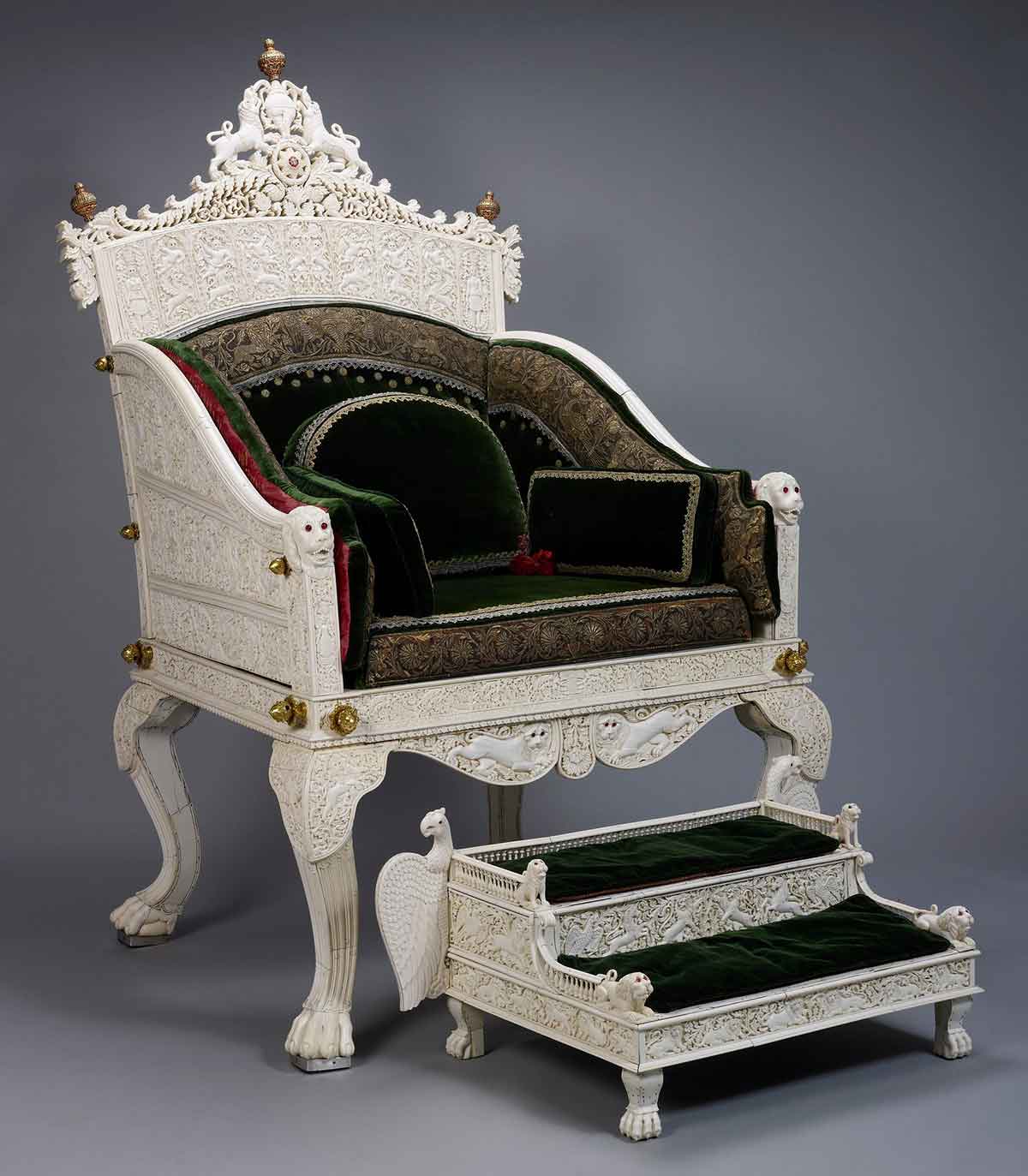 Ivory Throne and footstool 1840-50 - The Royal Collection Trust |
References:
 Support Us
Support Us
Satyagraha was born from the heart of our land, with an undying aim to unveil the true essence of Bharat. It seeks to illuminate the hidden tales of our valiant freedom fighters and the rich chronicles that haven't yet sung their complete melody in the mainstream.
While platforms like NDTV and 'The Wire' effortlessly garner funds under the banner of safeguarding democracy, we at Satyagraha walk a different path. Our strength and resonance come from you. In this journey to weave a stronger Bharat, every little contribution amplifies our voice. Let's come together, contribute as you can, and champion the true spirit of our nation.
 |  |  |
| ICICI Bank of Satyaagrah | Razorpay Bank of Satyaagrah | PayPal Bank of Satyaagrah - For International Payments |
If all above doesn't work, then try the LINK below:
Please share the article on other platforms
DISCLAIMER: The author is solely responsible for the views expressed in this article. The author carries the responsibility for citing and/or licensing of images utilized within the text. The website also frequently uses non-commercial images for representational purposes only in line with the article. We are not responsible for the authenticity of such images. If some images have a copyright issue, we request the person/entity to contact us at satyaagrahindia@gmail.com and we will take the necessary actions to resolve the issue.
Related Articles
- The perpetrator of the Jallianwala Bagh massacre General Reginald Dyer was forgiven by Mohandas Gandhi as an exercise of forgiveness or love to nurse Dyer back to life if he was suffering from a physical malady
- Our first true war of independence lie forgotten within the fog of time and tomes of propaganda: Sanyasi Rebellion, when "renouncers of the material world" lead peasants in revolt against British and fundamentalist islamic clans
- Pt. Madan Mohan Malaviya’s independent ‘Note’ to the Industrial Commission of 1916: India’s Industrial Heritage
- With Lord Mountbatten & Edwina's 'bed-hopping' marriage - gay brothels and affair with PM, British historian Andrew Lownie reveals it all
- Tirot Singh: An Unsung Hero of the Khasi Tribe who destroyed British with his skill at Guerrilla Warfare
- Indira Gandhi’s bahu published intimate photos of Jagjivan Ram’s son in her magazine: This 'Saas-Bahu ki Saajish' mothered India’s first major political sex scandal which cost Jagjivan his political career
- 16 year old freedom fighter Shivdevi Tomar, who killed 17 Britishers and wounded many
- Theft on a Grand Scale - Britain stole $45 Trillion from India and lied about it. Indian money developed Britain and Other Countries
- In 1921, British forces brutally killed over 750 unarmed farmers in Munshiganj during a peaceful protest with experts calling it deadlier than Jallianwala Bagh while a memorial today stands as a grim reminder of their sacrifice & the atrocities committed
- Plea for a Perspective: The Story of Islamic Imperialism in India
- Winston Churchill's hate for Indians caused millions of deaths: A villainous supremacist
- Santi Ghosh and Suniti Choudhury: Two Teenage Freedom Fighters Assassinated British Magistrate
- Saraswathi Rajamani, at 16, became the youngest and first female spy for INA, boldly recruited by Netaji in 1942, courageously spent two years spying on the British in Myanmar during WWII, a pivotal yet overlooked heroine in India's struggle for freedom
- Reality of Britishers who tortured, brutalized Indian women and threw them into sexual slavery
- A Great man Beyond Criticism - Martyrdom of Shaheed Bhagat Singh (Some Hidden Facts)



